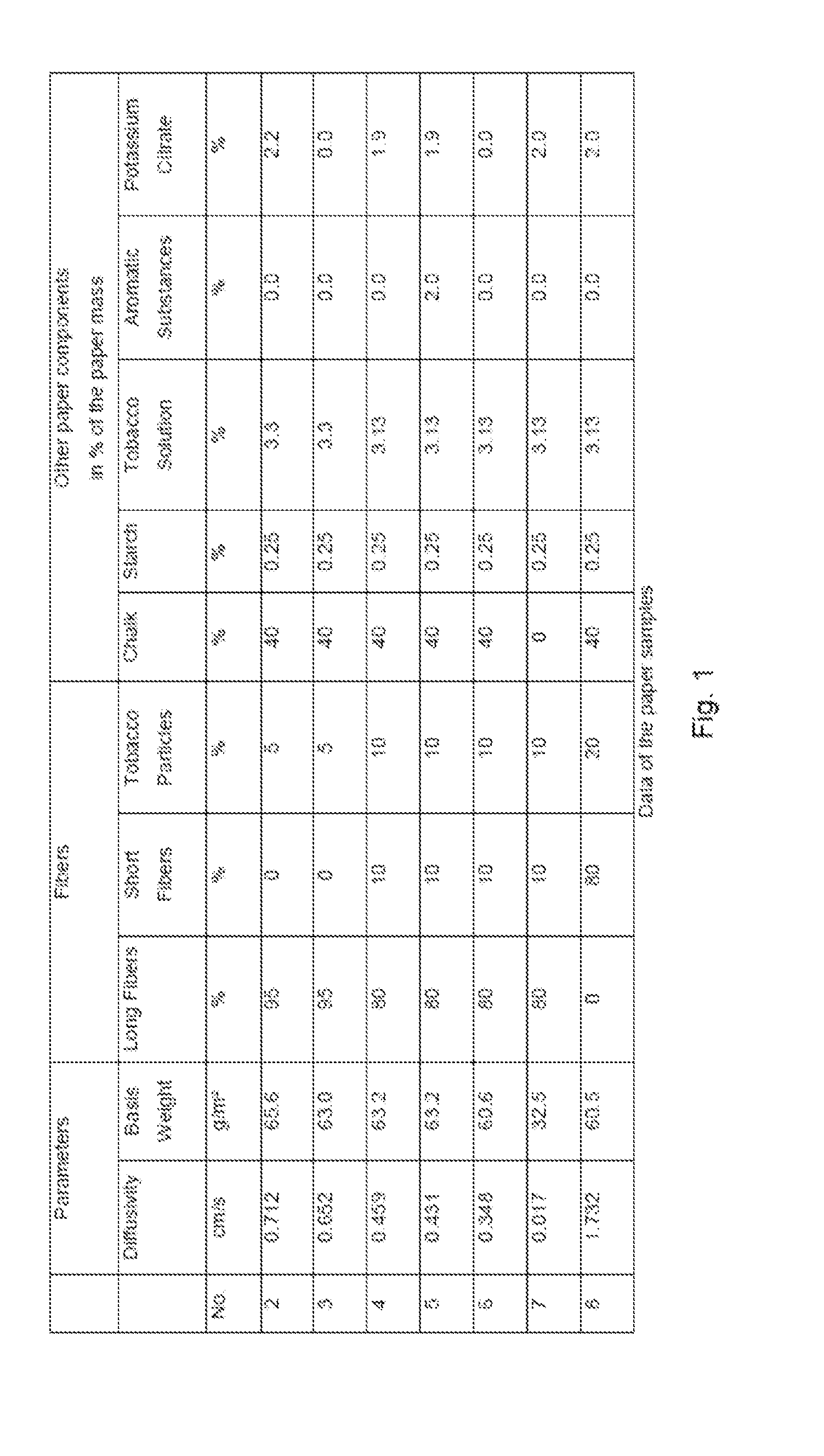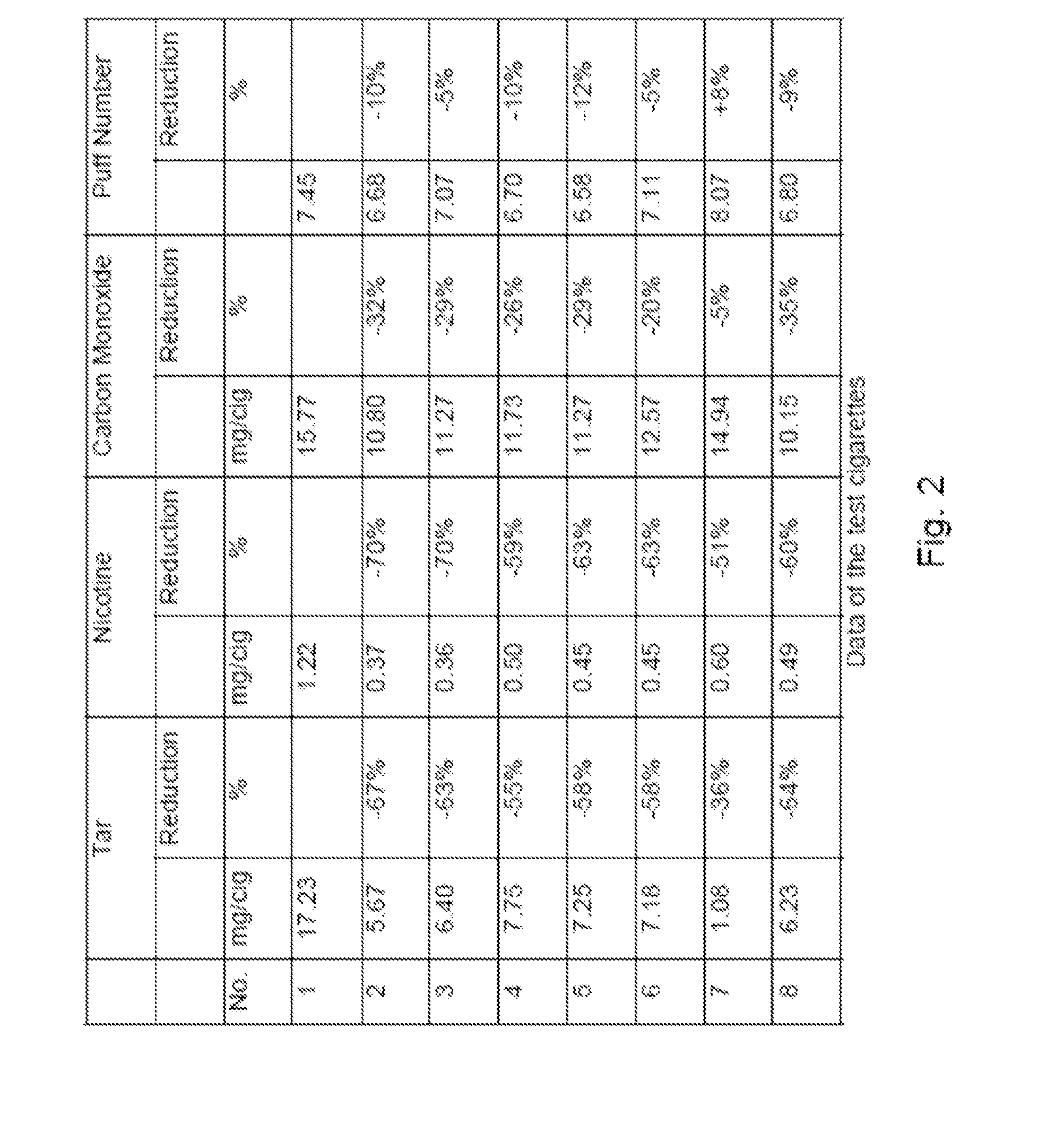Paper Filled with Tobacco Particles
a technology of tobacco particles and paper, applied in the field of tobacco articles, can solve the problems of reducing the yield of smoke, affecting the customer acceptance or taste of cigarette, and being unable to produce or sell cigarettes, so as to reduce the yield of smoke and the taste of cigar
- Summary
- Abstract
- Description
- Claims
- Application Information
AI Technical Summary
Benefits of technology
Problems solved by technology
Method used
Image
Examples
Embodiment Construction
[0038]As a proof that the paper according to the invention achieves the desired effect, seven different papers filled with tobacco particles were produced. The detailed parameters of the produced papers can be seen in the table of FIG. 1. The papers differ mainly in the mixing ratio of long fibers, short fibers and tobacco particles, wherein the values in the table of FIG. 1 concerning long fibers, short fibers and tobacco particles refer to the mixing ratio among each other, that is to say in the “share of fibers”, and not to their absolute content in the paper mass. The share of long fibers in examples 2-7 was between 80 and 95% by weight, the share of short fibers was up to 10% and the share of tobacco particles was between 5 and 10% by weight of the fiber share. In example 8 only short fibers and tobacco particles were selected as fibers.
[0039]Chalk was used as a filler, wherein, due to the purity, precipitated chalk was preferred, which is contained in the paper samples 2-6 in ...
PUM
 Login to View More
Login to View More Abstract
Description
Claims
Application Information
 Login to View More
Login to View More - R&D
- Intellectual Property
- Life Sciences
- Materials
- Tech Scout
- Unparalleled Data Quality
- Higher Quality Content
- 60% Fewer Hallucinations
Browse by: Latest US Patents, China's latest patents, Technical Efficacy Thesaurus, Application Domain, Technology Topic, Popular Technical Reports.
© 2025 PatSnap. All rights reserved.Legal|Privacy policy|Modern Slavery Act Transparency Statement|Sitemap|About US| Contact US: help@patsnap.com


